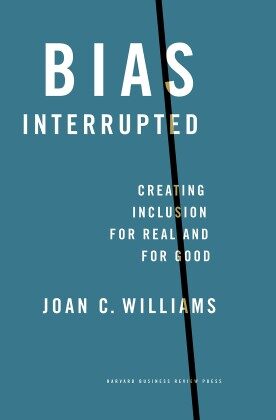Joan C. Williams is a Distinguished Professor of Law, Hastings Foundation Chair, and Director of the Center for WorkLife Law at the University of California, Hastings College of the Law. Described by the New York Times Magazine as having “something approaching rock star status” in her field, she has played a central role in debates over structural inequality for decades. Her 2014 cowritten book, What Works for Women at Work, was praised by the New York Times Book Review as “deftly combining sociological research with a more casual narrative style . . . [that] offers unabashedly straightforward advice in a how-to primer for ambitious women.” Describing her 2017 book, White Working Class, the Washington Post noted that President Joe Biden carried a dog-eared copy “everywhere, scrawling notes on the pages and pulling out well-worn copies to share passages.
About Bias Interrupted: Creating Inclusion for Real and for Good
A cutting-edge, relentless, objective approach to inclusion.
Companies spend billions of dollars annually on diversity efforts with remarkably few results. Too often diversity efforts rest on the assumption that all that’s needed is an earnest conversation about “privilege.” That’s not enough. To truly make progress we need to stop celebrating the problem and instead take effective steps to solve it.
In Bias Interrupted, Joan C. Williams shows how it’s done, and, reassuringly, how easy it is to get started. One of today’s preeminent voices on inclusive workplaces, Williams explains how leaders can use standard business tools—data, metrics, and persistence—to interrupt the bias that is continually transmitted through formal systems like performance appraisals, as well as the informal systems that control access to career-enhancing opportunities. The book presents fresh evidence, based on Williams’s exhaustive research and work with companies, that interrupting bias helps every group—including white men.
Comprehensive, though compact and straightforward, Bias Interrupted delivers real, practical value in an efficient and accessible manner to an audience that has never needed it more. It’s possible to interrupt bias. Here’s where you start.



